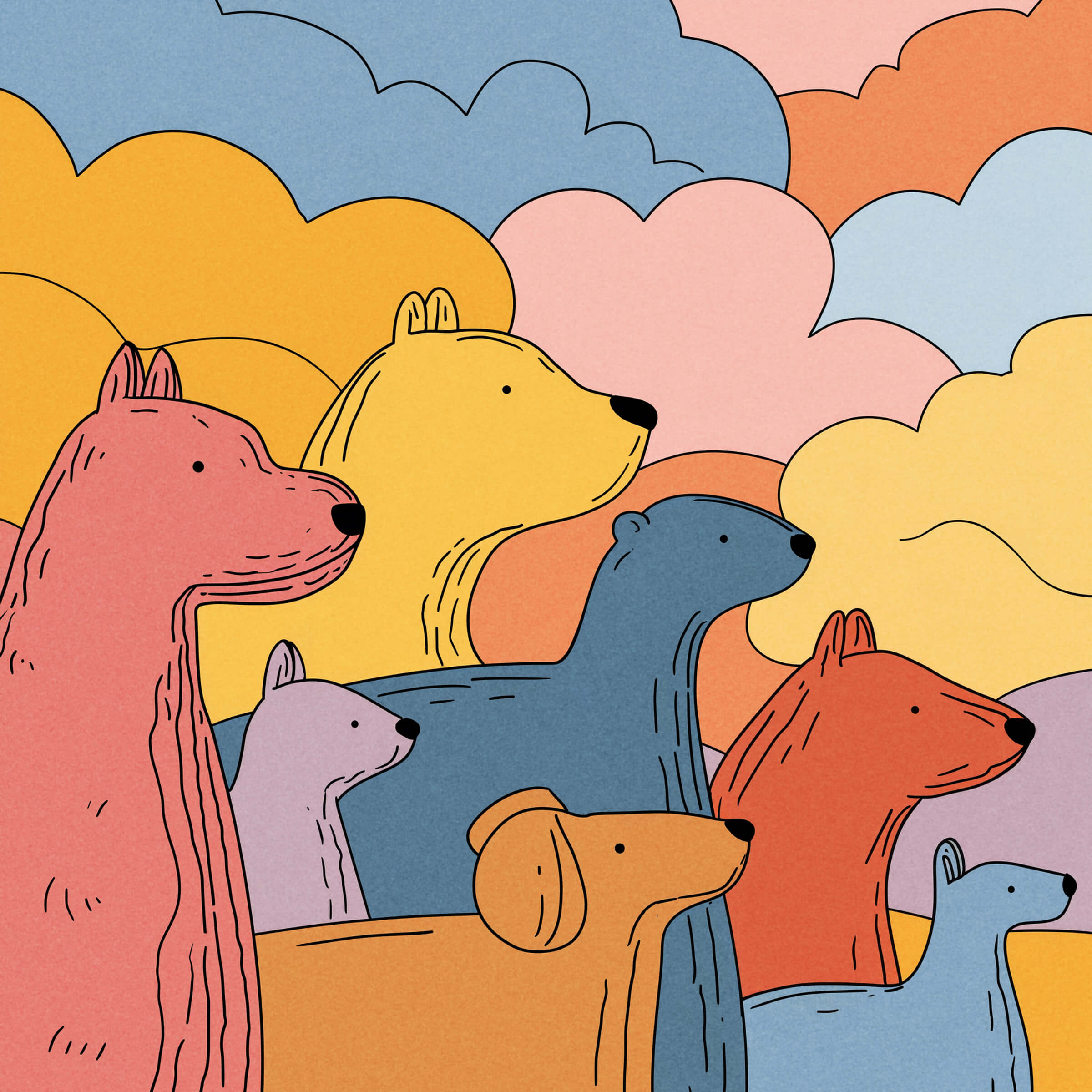
Fun Facts About Science Any Kid Should Know
Science is neat. The kids would say it drips. We love it and we love sharing randomly fascinating science facts with the world. This list is a roundup of some essentials dabbling in various areas of science. Click on the title to jump right to the section (but you should probably just read them all!)
- Fun Facts about Space
- Fun Facts about Biology
- Fun Facts about Earth Science
- Fun Facts about Physics
- Fun Facts about Humans
Space Fun Facts
1. Neil Armstrong was the first person to walk on the Moon on July 20, 1969, accompanied by Buzz Aldrin.
2. Gravity keeps the planets in orbit around the sun; it's the same force that keeps us stuck to the ground on Earth.
3. A person would weigh less on Mars due to its weaker gravitational pull compared to Earth.
4. A solar eclipse occurs when the moon moves between the sun and Earth, casting a shadow on our planet. (Just one of many facts about the roundness of our fair planet)
5. Solar eclipses last about seven and a half minutes due to the relative speeds of the Earth and moon.
6. Though the sun appears white from Earth, it's actually a mixture of all colors due to its broad spectrum of emitted light.
7. Mars has blue sunsets, unlike Earth's more common red and orange hues, due to its atmosphere scattering light differently.
8. Mercury is the closest planet to the sun, making it the fastest orbiting planet.
9. Venus is the hottest planet due to its thick, heat-trapping atmosphere.
10. Pluto was declassified as a planet in 2006 and is now considered a dwarf planet.
11. The footprints on the Moon from the NASA astronauts (circa Apollo 11) are expected to last for 100 million years. Oh goodie! More moon facts.
12. Two sports have been played on the Moon—golf and the javelin toss—both of which happened during 1971's Apollo 14 mission.
13. The Moon is slowly drifting away from Earth at 3.8 cm per year and will eventually escape its orbit (in a billion+ years, so don’t sweat it).
14. Mercury and Venus are the only two planets in our solar system that do not have moons.
15. Jupiter is the biggest planet in our solar system. It has a diameter of about 142,984 kilometers. That’s 88,846 miles.
16. All planets except Earth are named after Roman or Greek gods or goddesses. The name "Earth" means "ground" in Old English and German.
Biology Fun Facts
1. Babies have around 100 more bones than adults due to the fusion of bones as they grow.
2. The femur, or thigh bone, is the largest bone in the human body, crucial for supporting our weight.
3. The stapes bone, located in the ear, is the smallest bone in the human body and is essential for hearing.
4. The O negative blood type is known as the universal donor because it can be transfused to individuals of any blood type. Fun fact, it’s also a band name.
5. The skin is the largest organ in the human body, providing protection and regulating temperature.
6. White blood cells are crucial for immunity, protecting against illness and infection by fighting off infections like bacteria and fungus.
7. Mitosis produces two new identical cells, referred to as parent cells and daughter cells, vital for growth and repair.
8. Cheetahs can change direction midair, a unique ability among cats, aiding in their high-speed pursuits. Like that one? Try these 15 facts about cats.
9. The African Elephant is the largest land animal alive today, capable of weighing up to 7 tons.
10. Sharks can sense electricity using special organs called ampullae of Lorenzini, unlike humans.
11. Octopuses have eight limbs, comprising six arms and two legs, enabling versatile movement and hunting.
12. Some animals partake in coprophagy. This is where they eat their own poop. Yikes.
13. Sharks have zero bones in their bodies. Instead, their skeletons are made of cartilage, which is lighter and more flexible than bone.
14. The rarest blood type is AB-. This blood type is found in less than 1% of the world's population. These folks can donate plasma that is compatible with any other blood type.
15. The scientific study of algae is called phycology. Also known as algology, it involves studying seaweed ecosystems.
Physics Fun Facts
1. There are four states of matter in the universe: solid, liquid, gas, and plasma, each with distinct properties.
2. Electron pairs create covalent bonds when shared between two atoms, essential for forming molecules.
3. Geiger Counters measure radiation, detecting ionizing particles through electrical pulses.
4. Newton's third law of motion states that 'for every action, there is an equal and opposite reaction.’ This principle is fundamental in understanding forces and interactions.
5. Sound travels faster in water than in air. In fact, it moves about four times faster in water.
6. Lasers work by focusing light waves, not sound waves. "Laser" stands for Light Amplification by Stimulated Emission of Radiation.
7. A Van de Graaff generator is a scientific tool used to teach about static electricity. It uses a moving belt to accumulate an electric charge.
8. Friction is the force that occurs when solid surfaces rub against each other. Objects have different amounts of friction depending on how rough or smooth they are.
9. Cones in the human eye allow us to see wavelengths of light. There are three different types of cones, each corresponding to a different color wavelength.
10. Radiation is the transfer of waves or particles from one place to another. Examples include light, sound, heat, and X-rays.
11. Endothermic reactions absorb heat from their surroundings and make things colder. Examples include melting ice cubes and cooking an egg. What? Want more egg facts? We got um.
12. Planes stay in the air due to the shape of their wings, which force air downward and create lift. This lift counteracts gravity, allowing planes to fly.
13. Electrons are smaller than atoms. Atoms are composed of protons, neutrons, and electrons, making electrons the tiniest component.
14. Diamonds do not last forever; they eventually degrade to graphite over billions of years. Graphite is what pencil leads are made from.
15. An insulator is a material that will not carry an electrical charge. Examples include rubber, glass, and plastic.
16. Hot water freezes faster than cold water due to the Mpemba effect. It's a paradoxical phenomenon that's still not fully understood.
17. The Eiffel Tower gets taller in the summer because the iron expands in the heat.
Earth Science Fun Facts
1. Mount Everest is the tallest mountain in the world, standing at a towering 29,029 feet.
2. Pangea was Earth's supercontinent before breaking apart due to continental drift over millions of years.
3. The world's most active volcano, Kilauea, is located in Hawaii. It has been erupting almost continuously since the early 1980s.
4. The pedosphere, consisting of soil, is crucial for sustaining life. Soil is made up of minerals, air, water, and organic matter.
5. Horticulture combines plant science with aesthetics. It focuses on the sustainable cultivation of decorative plants.
6. During an equinox in March and September, daylight and nighttime are equal. The Earth's axis is perpendicular to the sun during these times.
7. The National Weather Service declares a blizzard when winds gust at least 35 miles per hour. Blizzards also feature blowing or falling snow with very low visibility.
8. A carbon footprint measures the greenhouse gases emitted by a person or organization. These gases, like methane and carbon dioxide, contribute to global warming.
9. The Earth has three main layers: the crust, mantle, and core. Each layer has distinct physical and chemical properties, contributing to the dynamic nature of our planet.
10. 97% of Earth's total water is salt water. The hydrosphere includes all Earth's water, like oceans and glaciers.
11. Pumice is the only rock that floats. It's a light and porous volcanic rock that forms when lava cools rapidly.
12. The largest desert in the world is Antarctica. Although it's cold, it qualifies as a desert due to its low precipitation. Brrr. Here's some more fun Antarctica facts to warm you up.
13. The tallest type of grass is bamboo. Some species can grow up to 91 centimeters (about 3 feet) in a single day!
14. The peak of Chimborazo in Ecuador is the farthest point from Earth's center because of the planet's equatorial bulge.
Human Body Fun Facts
1. The liver is the largest internal organ in the human body. It plays essential roles in digestion, metabolism, and detoxification.
2. Clinical term for bad breath is halitosis. It can result from various factors including poor dental hygiene, certain foods, and medical conditions.
3. Humans have more than the commonly believed five senses; many neurologists identify nine or more, including balance and temperature.
4. The human body has 206 bones. These bones provide structure, protect organs, and anchor muscles.
5. Blondes have more hair follicles than brunettes. On average, they have about 140,000 hair follicles compared to 100,000 for brunettes.
6. The blood inside your body is dark red, due to hemoglobin, not blue as veins might appear.
7. The rarest blood type in humans is AB negative. This type is found in less than 1% of the world’s population.
8. An adult human has 32 teeth. This includes wisdom teeth, which some people have removed.
9. The ears help maintain balance. The inner ear contains structures that detect motion and changes in position.
10. Babies have around 100 more bones than adults due to the fusion of bones as they grow.
11. Diabetes develops as a result of a problem with the pancreas. The pancreas either doesn't produce enough insulin or the body becomes resistant to insulin.
12. The temporal lobe of the brain deals with hearing and language. This lobe also plays a role in processing memories and emotions.
13. Fat leaves your body when you lose weight through sweat, urine, and breath. When metabolized, fat cells are converted to energy, water, and carbon dioxide.
14. Most of your body heat escapes evenly across your body, not primarily from your head as many believe. If that tickles your interest, here's more fun facts about humans.
Whew. That's a mouthful! You are now more suited to answer random trivia from a stranger, and surprise your classmates with useless (useful?) knowledge. If you liked this fun fact list, be sure to keep digging elsewhere on our blog. I'd recommend the favorite Fun Facts About Poop article.





